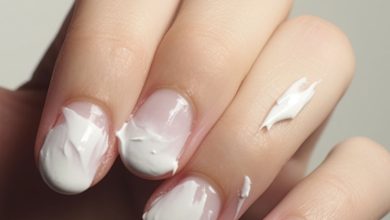What can I do to effectively remove grease stains from a sweatshirt that has already been washed and ironed with brown paper, yet the stains persist?

Understanding Grease Stains
What are grease stains?
Grease stains come from oils and fats that are hydrophobic, meaning they repel water. This makes them more challenging to remove with standard washing methods.
ADVERTISEMENT
Why are they stubborn?
When grease stains are exposed to heat, such as from washing in hot water or ironing, they can set into the fabric, making them even more difficult to remove.
ADVERTISEMENT
Step-by-Step Guide to Removing Grease Stains
Step 1: Identify the Stain
Before engaging in any form of treatment, double-check the stain. Ensure that it is indeed a grease stain as opposed to a different type. This will influence the type of treatment you use.
Step 2: Apply Liquid Dish Soap
Liquid dish soap is an effective degreaser. Here’s how to use it:
- Choose a mild liquid dish soap, as dishwasher detergents can be too harsh on clothing fabrics.
- Rub a small amount of dish soap into the stain.
- Let it sit for about 5 to 10 minutes.
Step 3: Re-wash the Sweatshirt
- Wash the sweatshirt again in the hottest water safe for the fabric. Check the care tag for instructions.
- Add a bit more detergent than usual to help break down the grease.
Step 4: Air Dry the Garment
After washing, do not put the sweatshirt in the dryer as the heat can cause any remaining grease to set deeper. Instead, air dry the garment until you can be sure the stain is fully removed.
Step 5: Try a Stain Remover
If the dish soap didn’t do the trick, consider applying a stain remover:
- Choose a remover that is suitable for greasy stains.
- Read the instructions and precautions on the stain remover’s label fully.
- Apply the stain remover to both sides of the fabric and gently rub it into the stain.
- Allow it to sit for the amount of time recommended by the manufacturer before washing it again.
Step 6: Use an Absorbent Powder
If the stain persists, you can use an absorbent powder like talcum powder, baby powder, or even cornstarch:
- Apply a generous amount of powder to the stain and let it sit for a few hours or overnight.
- Gently brush off the powder and observe whether the stain appears lighter.
- If the powder seems to help, repeat this process to lighten the stain further.
Step 7: Consider Professional Cleaning
If the stain refuses to budge after repeated treatments at home, it might be time to take the sweatshirt to a professional cleaner. They have specialized products and equipment that may be more effective at removing stubborn stains.
Additional Tips for Success
- Always test any treatment on a small, inconspicuous area first to ensure that it does not damage the fabric.
- Be patient and repeat the process several times if necessary. Some stubborn stains need multiple treatments before completely vanishing.
- The sooner you treat the grease stain after it happens, the better your chances are of successfully removing it.
- Preventative measures are also helpful. When dealing with greasy foods or substances, wear an apron or old clothes to avoid future stains.
- Remember that each garment is different, and some fabrics may not react well to certain cleaning methods. Always adhere to the care instructions provided for your sweatshirt to avoid any unintended damage.




